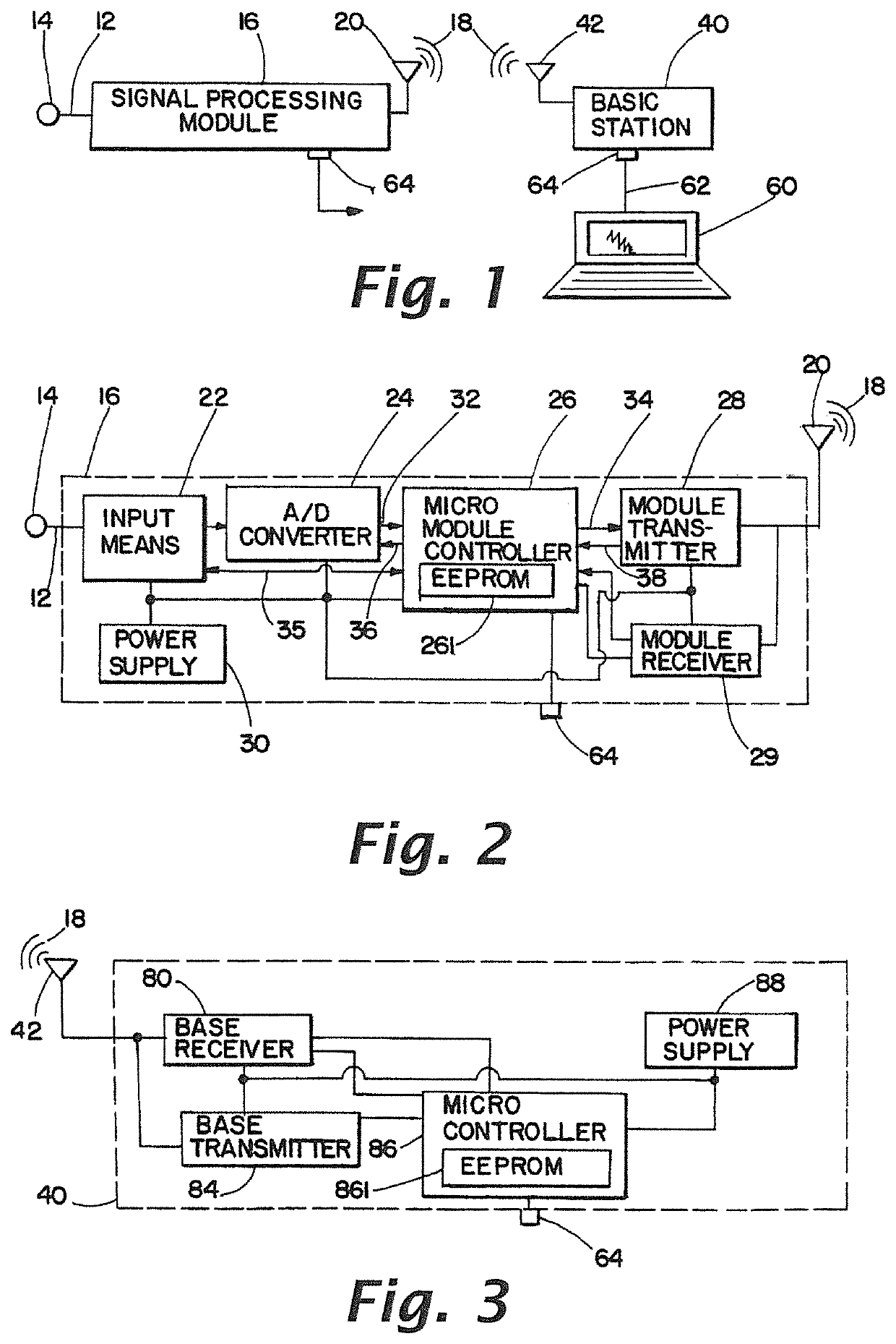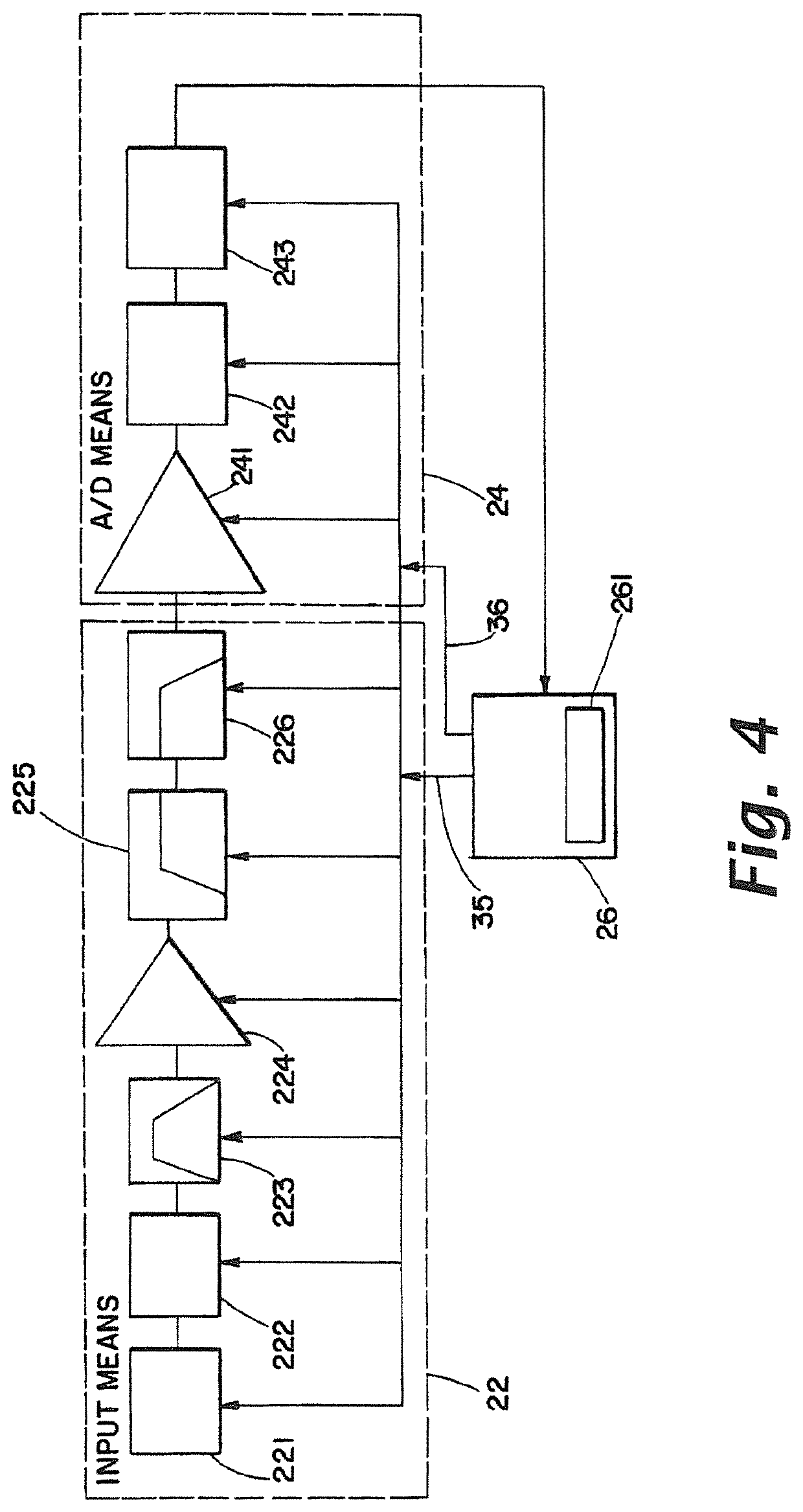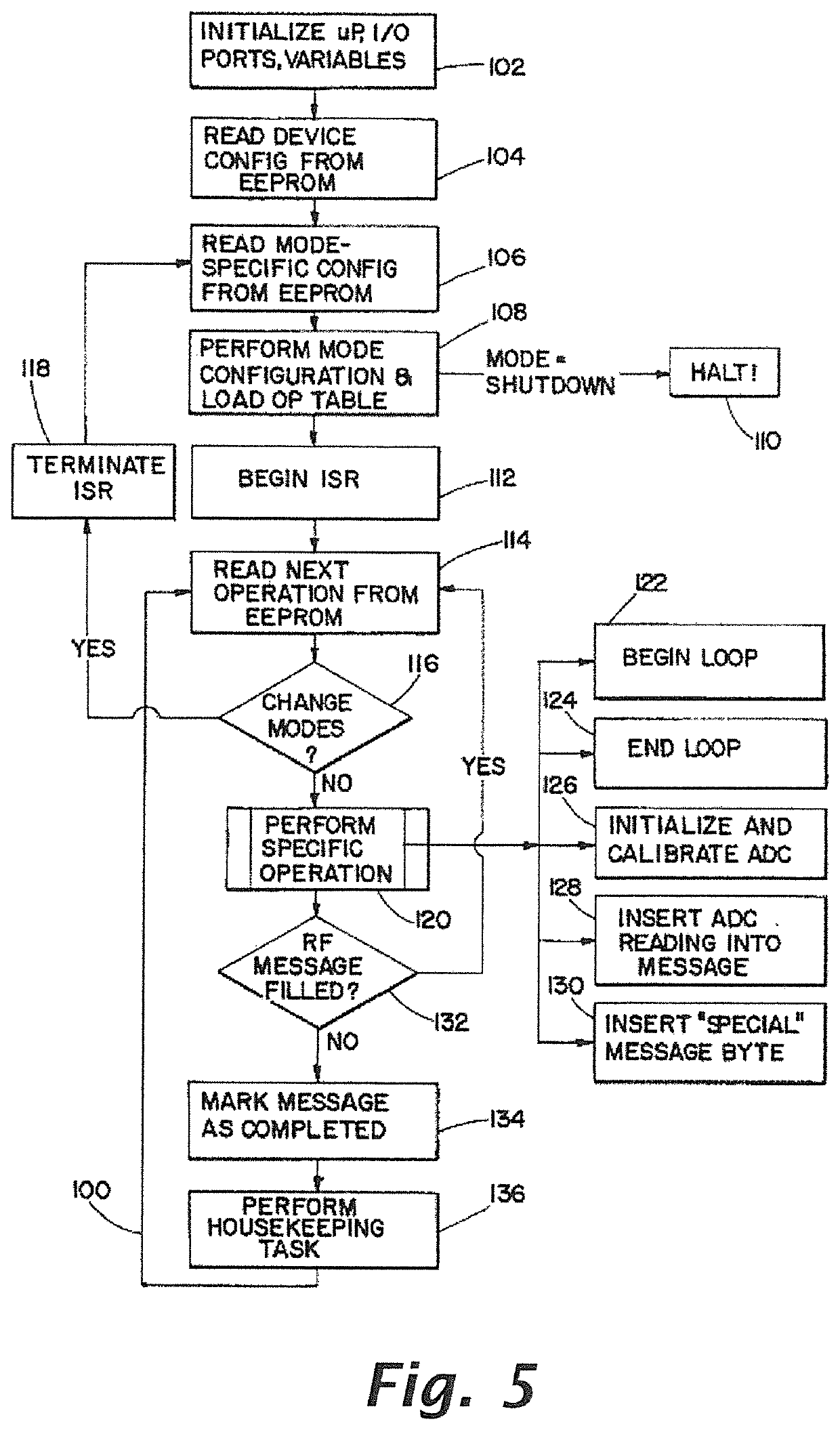Integrated diagnostic and therapeutic PAP system
a pap system and integrated technology, applied in the field of integrated diagnostic and therapeutic pap systems, can solve the problems of morbidity and mortality, deterioration of quality of life, and further undesirable effects of sleepiness on motor vehicle driving, so as to improve the accuracy of control, improve the accuracy of pap or cpap adjustment, and collect more robust effects
- Summary
- Abstract
- Description
- Claims
- Application Information
AI Technical Summary
Benefits of technology
Problems solved by technology
Method used
Image
Examples
second embodiment
[0116]a method to identify the shift in measured power spectrum of the signal from the pressure transducer to identify stall utilizes a recursively identified system model, particularly an Auto-Regressive Moving Average (ARMA) model. Advantageously, the controller is the ORICA™ controller, an extended horizon, adaptive, predictive controller, produced by Orbital Research, Inc. and patented under U.S. Pat. No. 5,424,942, which is incorporated herein by reference. The ARMA recursive identification method attempts to fit specific models to the measured data or signals. Evaluation of this data reveals distinct, identifiable model order shifts based, which can be used to actuate the treatment device at various levels. Further analysis of the frequency spectrum of the physiological data related to various sleeping disorders reveals recognizable changes in this data or signals. This clear characterization alongside the model order shifts allows the ORICA identifier to classify discrete mod...
third embodiment
[0117]a method for quantifying the power spectrum measured by the one or more sensors is by using Short-Time Fourier Transforms (STFT). A Discrete Fourier transform (DFT), and its numerically efficient complement the Fast Fourier Transform (FFT), both provide frequency information of a digitized signal or data from the sensors. The DFT and FFT both assume that the signal that is being measured is stationary in time. However, in the case of the subject being tested and treated, the measured signal or data is not stationary in time, which means a typical DFT / FFT approach is inapplicable. However, for short time periods the signal maybe considered to be stationary. Therefore, it is possible to estimate the mean power spectrum by segmenting the physiological data or signals into epochs lasting anywhere from 0.1-5 seconds each, and then applying a discrete-time Fourier transform (DFT) to the windowed data. The DFT is used to calculate the power spectrum of the signal for that epoch. Then...
fourth embodiment
[0118]a signal processing method which can provide indications to the control system that various symptoms are impending, to enable either actuation of the treatment device, is to analyze the sensor data using a time-frequency transform. A time-frequency transform enables both frequency resolution and estimation stability for highly non-stationary signals, which typifies some types of such as some of the data or signals related to various physiological conditions. This is accomplished by devising a joint function of both time and frequency, a distribution that describes the energy and density of a signal simultaneously in both time and frequency. The general form of the time-frequency transform is given by the following
[0119]P(t,w)=14Π2∫∫∫e-jθt-jτω+jθuϕ(θ,t)·s*(u-12τ)s(u+12τ)dudτdθ
[0120]This transform can be used to calculate instantaneous power spectra of a given signal. The actual transformation distribution is selected by changing the kernel, Φ(θ,τ...
PUM
 Login to View More
Login to View More Abstract
Description
Claims
Application Information
 Login to View More
Login to View More - R&D
- Intellectual Property
- Life Sciences
- Materials
- Tech Scout
- Unparalleled Data Quality
- Higher Quality Content
- 60% Fewer Hallucinations
Browse by: Latest US Patents, China's latest patents, Technical Efficacy Thesaurus, Application Domain, Technology Topic, Popular Technical Reports.
© 2025 PatSnap. All rights reserved.Legal|Privacy policy|Modern Slavery Act Transparency Statement|Sitemap|About US| Contact US: help@patsnap.com



